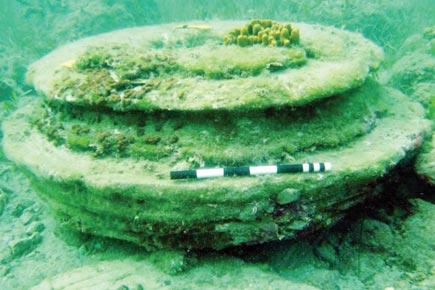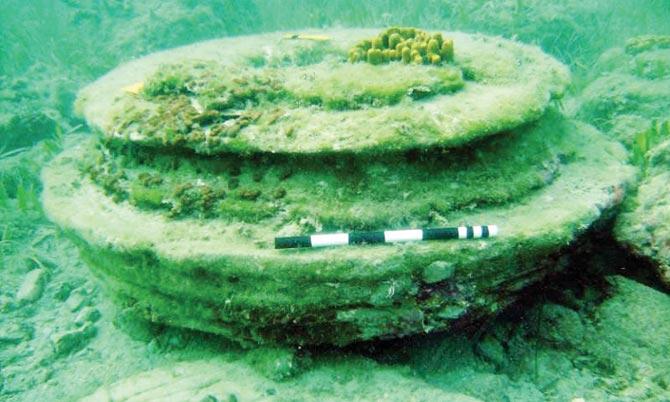The ancient underwater remains of what was assumed to be a long lost Greek city in Zakynthos were actually created by a naturally occurring phenomenon

Pic/University of Athens
Greece: The ancient underwater remains of what was assumed to be a long lost Greek city in Zakynthos were actually created by a naturally occurring phenomenon.
 Pic/University of Athens
Pic/University of Athens
ADVERTISEMENT
A new research uncovered that the site was created by a natural geological phenomenon that took place in the Pliocene era — up to five million years ago.
"The site was first thought to be an ancient city port, lost to the sea. There were what superficially looked like circular column bases, and paved floors. But no other signs of life — such as pottery," said Julian Andrews from University of East Anglia (UEA) in the UK. "The disk and doughnut morphology is typical of mineralisation at hydrocarbon seeps," he said.
"They are a result of a sub-surface fault which has not fully ruptured the surface of the sea bed. It allowed gases, particularly methane, to escape from depth," he added.
Microbes use the carbon in methane as fuel. Oxidation of the methane changes the chemistry of the sediment, forming a kind of natural cement, called concretion. The findings were published in the journal Marine and Petroleum Geology.
 Subscribe today by clicking the link and stay updated with the latest news!" Click here!
Subscribe today by clicking the link and stay updated with the latest news!" Click here!







